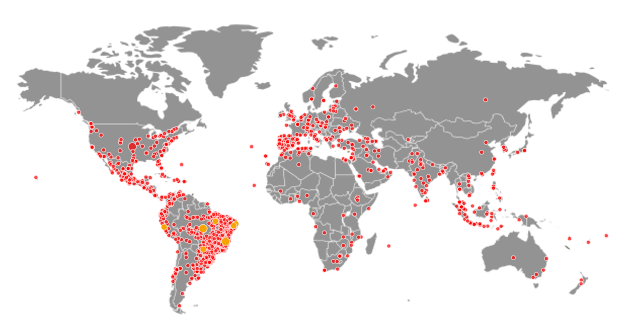CHALLENGES AND POTENTIALITIES OF ORGANIC AND INTERCROPPED SYSTEMS IN VEGETABLE PRODUCTION: A SOCIOECONOMIC AND ENVIRONMENTAL PERSPECTIVE
DOI:
https://doi.org/10.61164/rmnm.v7i1.3789Keywords:
Organic production, Intercropped systems, SustainabilityAbstract
Organic and intercropped vegetable production systems represent sustainable alternatives that reconcile economic viability, environmental benefits, and positive social impacts. This study aims to identify the challenges and potentialities of organic and intercropped systems in vegetable production from a socioeconomic and environmental perspective. The adoption of organic and intercropped practices faces obstacles such as the need for more intensive management, higher demand for technical knowledge, and commercialization limitations. However, these challenges are counterbalanced by advantages such as reduced use of agrochemicals, improved soil quality, diversified production, and higher market value of products. Additionally, these systems contribute to food security and environmental conservation by promoting biodiversity and reducing the degradation of natural resources. The research highlights the importance of public policy incentives and farmer training to expand the adoption of these practices. It is concluded that, despite the difficulties, organic and intercropped systems have great potential to make vegetable production more sustainable and economically viable.
References
ALMEIDA, I. L.; JUNQUEIRA, A. M. R. Produção de Hortaliças em Sistema Orgânico, Agricultura Familiar e Segurança Alimentar no Brasil. Sociedade e desenvolvimento rural online, v. 5, n. 1, set. 2011.
AMARO, G. B. et al. Recomendações técnicas para o cultivo de hortaliças em agricultura familiar. Brasília: Embrapa hortaliças, 2007.
BATISTA, Nilcileny da Silva et al. Diversificação de cultivos de hortaliças associada ao uso de insumos para a fertilidade do solo, em sistema orgânico de produção. 2016.
BELLÉ, D.; SCHENATTO, F. J. A.; GUADAGNIN, C. A. Adoção de inovações tecnológicas no cultivo de hortaliças em sistema de plantio direto: uma revisão integrativa da literatura. Revista de Economia e Sociologia Rural, v. 61, n. 3, p. e258684, 2022.
BEM, Anderson Nunes de. Uso de Drones na agricultura. 2024.
CANIELLO, M.; CANIELLO, N. T.; DE LIMA MELO, W. J. Compras governamentais de produtos da agricultura familiar para a merenda escolar no território rural do Seridó paraibano. Raízes: Revista de Ciências Sociais e Econômicas, v. 36, n. 2, p. 82-97, 2016.
CONFEDERAÇÃO DA AGRICULTURA E PECUÁRIA DO BRASIL – CNA. Mapeamento e qualificação da cadeia produtiva das hortaliças no Brasil. Brasília: CNA, 2017. Disponível em: https://www.cnabrasil.org.br/cna/panorama-do-agro. Acesso em: 10 jan. 2025.
IBGE. Instituto Brasileiro de Geografia e Estatística. Censo Agro 2017: População ocupada nos estabelecimentos agropecuários cai 8,8%. Agência de Notícias, 2019. Disponível em: https://agenciadenoticias.ibge.gov.br/agencia-sala-de-imprensa/2013-agencia-de-noticias/releases/25789-censo-agro-2017-populacao-ocupada-nos-estabelecimentos-agropecuarios-cai-8-8. Acesso em: 10 jan. 2025.
KUMAR, M. et al. Does integrated sources of nutrients enhance growth, yield, quality and soil fertility of vegetable crops. International Journal of Current Microbiology and Applied Sciences, v. 7, n. 6, p. 125-155, 2018.
KUMAR, P. N. Effect of intercropping on fruit crops: a review. International Journal of Current Microbiology and Applied Sciences, v. 9, n. 12, p. 745-755, 2020.
LIMA, J. P. F.; BESSA, R. R.; SALOMÃO, P. E. A. A importância da agricultura familiar para a segurança alimentar. Revista Multidisciplinar do Nordeste Mineiro, v. 9, n. 1, 2024.
MADEIRA, N. R.; REIFSCHNEIDER, F. J. B.; GIORDANO, L. D. B. Contribuição portuguesa à produção e ao consumo de hortaliças no Brasil: uma revisão histórica. Horticultura Brasileira, v. 26, p. 428-432, 2008.
MAITRA, S. et al. Intercropping—A low input agricultural strategy for food and environmental security. Agronomy, v. 11, n. 2, p. 343, 2021.
MAPA –Ministério de Agricultura, Pecuária e Abastecimento. 2019 Semana dos Orgânicos é lançada com destaque para crescimento do setor no Brasil.
MATTEI, T. F.; MICHELLON, E. Panorama da agricultura orgânica e dos agrotóxicos no Brasil: uma análise a partir dos censos 2006 e 2017. Revista de Economia e Sociologia Rural, v. 59, n. 4, p. e222254, 2021.
MONTEIRO, A. R. Experiências e perspectivas no uso de frutíferas em sistemas integrados de produção: revisão. 2020. 37 F. Monografia (Especialização em Sistemas Integrados de Produção Agropecuária) - Instituto Federal Goiano, Iporá, 2020.
NASCIMENTO, W. M; PEREIRA, R. B. Produção de mudas de hortaliças. Brasília, DF: Embrapa, 2016.
NETO, N. D. C. et al. Produção orgânica: uma potencialidade estratégica para a agricultura familiar. Revista Percurso-NEMO Maringá, v. 2, n. 2, p. 73-95, 2010.
PASQUALOTTO, Nayara; KAUFMANN, Marielen Priscila; WIZNIEWSKY, José Geraldo. Agricultura familiar e desenvolvimento rural sustentável. 2019.
PAUDEL, S. et al. Conservation agriculture and integrated pest management practices improve yield and income while reducing labor, pests, diseases and chemical pesticide use in smallholder vegetable farms in Nepal. Sustainability, v. 12, n. 16, p. 6418, 2020.
PELZER, E. et al. Pea–wheat intercrops in low-input conditions combine high economic performances and low environmental impacts. European Journal of Agronomy, v. 40, p. 39-53, 2012.
PEREIRA, Mauricio Fernandes et al. Hortas orgânicas, Desafios e Estratégias na Agricultura com experiência de Agricultores Locai. 2024.
ROCHA, A. C. D; TOCOLOA, G. L.; TOCOLOA, A. E. L. Implicações de transporte de produtos agrícolas na comercialização no mercado grossista waresta. In: SOUZA, W. J. O; SANCHES, A. G. Tecnologia e inovação na agricultura: aplicação, produtividade e sustentabilidade em pesquisa. Editora Científica Digital, 2023. p. 159-175.
SAINJU, U. M.; GHIMIRE, R.; PRADHAN, G. P. Nitrogen fertilization II: Management practices to sustain crop production and soil and environmental quality. In: Nitrogen Fixation. London, UK: IntechOpen, 2019. p. 1-23.
SALLAM, B. N. et al. Productivity enhancement of cucumber (Cucumis sativus L.) through optimized use of poultry manure and mineral fertilizers under greenhouse cultivation. Horticulturae, v. 7, n. 8, p. 256, 2021.
SANTOS, C. C. Agrobiodiversidade: manejo e produção sustentável. Nova Xavantina, MT: Pantanal, 2020.
SANTOS, I. C.; CARVALHO, L. M. Produção sustentável de hortaliças. Belo Horizonte: EPAMIG, 2008.
SEDIYAMA, M. A. N.; SANTOS, Izabel Cristina dos; LIMA, Paulo César de. Cultivo de hortaliças no sistema orgânico. Revista Ceres, v. 61, p. 829-837, 2014.
SILVA, J. R., et al. Aspectos econômicos e sociais da produção de hortaliças no Brasil. Revista de Economia Agrícola, 47(1), 123-138, 2019.
SILVA, M. A. et al. Plantas de cobertura isoladas e em mix para a melhoria da qualidade do solo e das culturas comerciais no Cerrado. Research, Society and Development, v. 10, n. 12, p. e11101220008-e11101220008, 2021.
SILVA, W. F. et al. Diagnóstico da produção de hortaliças na região metropolitana de Belo Horizonte. Horticultura Brasileira, v. 33, p. 368-372, 2015.
SUÁREZ, J. C. et al. Influence of simultaneous intercropping of maize-bean with input of inorganic or organic fertilizer on growth, development, and dry matter partitioning to yield components of two lines of common bean. Agronomy, v. 12, n. 5, p. 1216, 2022.
TEIXEIRA, I. R.; MOTA, J. H.; SILVA, A. G. D. Consórcio de hortaliças. Semina: Ciências Agrárias, v. 26, n. 4, p. 507-514, 2005.
VISHWAKARMA, G. et al. Response of Integrated Nutrient Management on Different Physical Characters of Bael (Aegle marmelos Correa) cv. Narendra Bael-9. Int. J. Curr. Microbiol. App. Sci, v. 8, n. 2, p. 3341-3349, 2019.
Downloads
Published
How to Cite
Issue
Section
License
Copyright (c) 2025 Revista Multidisciplinar do Nordeste Mineiro

This work is licensed under a Creative Commons Attribution-NonCommercial-ShareAlike 4.0 International License.




